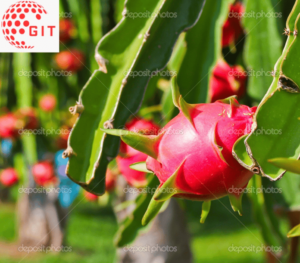Introduction to the Dragon Fruit Plant
The dragon fruit plant is one of the most fascinating plants in the world. Known for its exotic appearance, colorful flowers, and delicious fruit, it’s a popular choice for many gardeners and plant enthusiasts. If you’re interested in learning about the dragon fruit plant, this guide provides everything you need to know. We’ll cover its origin, growth process, health benefits, and much more.
Whether you’re planning to grow a dragon fruit plant or just want to understand more about it, this article uses easy-to-read language to ensure you gain a clear understanding.
What is the Dragon Fruit Plant?
The dragon fruit plant, also known as Hylocereus, belongs to the cactus family. It’s native to Central America but is widely grown in many parts of the world due to its appealing fruit and minimal care requirements. The dragon fruit plant produces a unique, colorful fruit with a sweet taste and numerous health benefits.
This plant is often called a “night-blooming” cactus because it flowers only at night, producing large, fragrant blossoms that attract pollinators. With its long vines and fleshy stems, the dragon fruit plant is visually striking and a beautiful addition to any garden.
Types of Dragon Fruit Plant
There are several varieties of the dragon fruit plant, each producing slightly different types of fruit:
- White-Fleshed Dragon Fruit (Hylocereus undatus) – This variety has a white interior with black seeds and pink skin. It’s the most common type found in markets.
- Red-Fleshed Dragon Fruit (Hylocereus costaricensis) – This variety has a vibrant red or magenta flesh and is known for its sweeter taste.
- Yellow Dragon Fruit (Selenicereus megalanthus) – This variety has yellow skin and white flesh. It’s smaller but known for its intense sweetness.
Each variety requires similar growing conditions, but some are more sensitive to temperature changes than others.
How to Grow a Dragon Fruit Plant
Growing a dragon fruit plant can be easy and rewarding. Follow these steps for the best results:
1. Choosing the Right Location
The dragon fruit plant loves sunlight. Choose a sunny location in your garden or patio. A location with at least 6-8 hours of sunlight daily is ideal for healthy growth.
2. Preparing the Soil
The dragon fruit plant grows best in well-draining soil with a pH level between 6 and 7.5. Sandy or loamy soil is ideal. You can also add organic matter to improve the soil’s fertility.
3. Planting the Dragon Fruit Plant
To start, you can either plant seeds or cuttings from an existing dragon fruit plant. Planting from cuttings is usually quicker. Insert the cuttings into the soil and water them lightly.
4. Watering Requirements
While the dragon fruit plant is a cactus, it still needs regular watering, especially during its growing phase. Water the plant when the top inch of soil feels dry, but avoid overwatering to prevent root rot.
5. Providing Support
The dragon fruit plant is a climbing cactus, so it will need support as it grows. Use a sturdy trellis or post to help the plant grow vertically.
Caring for the Dragon Fruit Plant
To ensure your dragon fruit plant grows healthy and produces fruit, follow these care tips:
1. Pruning
Prune the plant regularly to remove dead or damaged stems and promote healthy growth. Pruning helps the plant focus its energy on producing fruit.
2. Fertilizing
Use a balanced fertilizer every two months during the growing season. Avoid using too much nitrogen, as this can lead to excessive foliage growth rather than fruit production.
3. Pest Control
While dragon fruit plants are generally resistant to pests, some insects may occasionally attack. Use organic pest control methods to keep pests at bay.
Health Benefits of Dragon Fruit
The dragon fruit plant offers many health benefits due to its nutrient-rich fruit. Here are some of the top health benefits:
1. High in Antioxidants
Dragon fruit is rich in antioxidants like betalains, which help fight inflammation and reduce oxidative stress in the body.
2. Good for Digestion
Dragon fruit contains fiber, which aids in digestion and helps prevent constipation. Including dragon fruit in your diet can improve gut health.
3. Supports Heart Health
The seeds in dragon fruit are a source of healthy fats that may improve heart health. Eating dragon fruit can help lower bad cholesterol levels and improve overall cardiovascular health.
4. Boosts Immune System
Rich in vitamin C, dragon fruit helps boost the immune system, protecting the body from various infections.
5. Low in Calories
Dragon fruit is low in calories, making it an ideal snack for those looking to maintain or lose weight.

Frequently Asked Questions (FAQs)
1. How long does it take for a dragon fruit plant to produce fruit?
A dragon fruit plant typically takes 1 to 2 years to produce fruit when grown from cuttings. Plants grown from seeds may take up to 5 years to bear fruit.
2. How do you know when dragon fruit is ripe?
A ripe dragon fruit will have a bright, even color and slightly soft texture when pressed. Avoid fruit with brown spots or wrinkled skin, as this may indicate over-ripeness.
3. Can dragon fruit be grown indoors?
Yes, with proper sunlight and support, the dragon fruit plant can be grown indoors. A sunny window and a sturdy trellis are essential for indoor growth.
4. How often should I water my dragon fruit plant?
Water your dragon fruit plant when the top inch of soil feels dry. In hot weather, you may need to water more frequently, while in cooler months, water less.
5. What are the common pests affecting dragon fruit plants?
The most common pests include ants, aphids, and mealybugs. Using organic pest control methods can help prevent infestations.
Conclusion
The dragon fruit plant is not only an attractive addition to any garden but also offers nutritious and delicious fruit. With the right care, including proper sunlight, watering, and support, you can enjoy fresh dragon fruit from your garden. Whether you’re a gardening beginner or experienced plant lover, growing a dragon fruit plant can be a rewarding experience.





